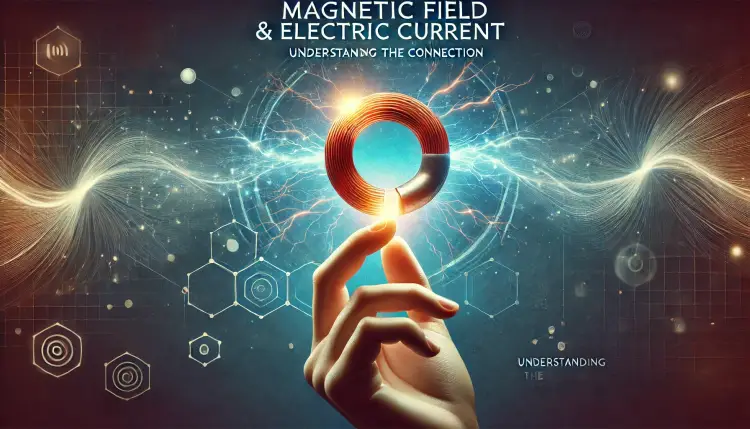Magnetic Effect Of Electric Current
The magnetic effects of electric current reveal how electricity and magnetism are interrelated. Understanding these effects is crucial for many technological applications and devices, such as motors, generators, transformers, and electromagnet.

"Magnetic Effects of Electric Current" covers the fundamental principles of how electric currents create magnetic fields and how these fields can be used in various applications. Here's a structured overview of the key concepts:
1. Magnetic Field and Field Lines
-
Magnetic Field: A region around a magnet where magnetic forces can be experienced. It is represented by magnetic field lines.
-
Magnetic Field Lines: These are imaginary lines that represent the direction and strength of the magnetic field. They emerge from the north pole and enter the south pole outside the magnet, and they form closed loops inside the magnet.
2. Oersted's Experiment
- Observation: Hans Christian Oersted discovered that a current-carrying conductor creates a magnetic field around it. This was demonstrated by placing a compass near a current-carrying wire and observing the deflection of the compass needle, indicating a magnetic field.
3. Magnetic Field Around a Current-Carrying Conductor
-
Straight Conductor: When current flows through a straight wire, it creates a circular magnetic field around the wire. The direction of the magnetic field can be determined using the right-hand thumb rule:
- Point your thumb in the direction of the current.
- Your curled fingers show the direction of the magnetic field lines around the wire.
-
Right-Hand Thumb Rule: For a current-carrying conductor, the direction of the magnetic field can be found by gripping the wire with your right hand with your thumb pointing in the direction of the current. Your fingers will curl in the direction of the magnetic field lines.
4. Magnetic Field Due to a Circular Loop
-
Single Circular Loop: When current flows through a circular loop of wire, it creates a magnetic field with concentric circles around the loop. The field is strongest at the center of the loop.
-
Solenoid: A solenoid is a coil of wire with many turns. When current flows through a solenoid, it produces a strong, uniform magnetic field inside the coil, similar to a bar magnet with distinct north and south poles. The field lines inside the solenoid are parallel and evenly spaced.
5. Force on a Current-Carrying Conductor in a Magnetic Field
-
Fleming's Left-Hand Rule: This rule helps determine the direction of the force exerted on a current-carrying conductor in a magnetic field:
- Thumb: Direction of the force (motion).
- First Finger: Direction of the magnetic field (north to south).
- Second Finger: Direction of the current.
-
Magnetic Force Formula: The force () on a current-carrying conductor in a magnetic field is given by:
where is the magnetic field strength, is the current, is the length of the conductor in the field, and is the angle between the direction of the current and the magnetic field.
6. Electromagnetic Induction
-
Faraday's Law of Electromagnetic Induction: Michael Faraday discovered that a changing magnetic field within a closed loop induces an electromotive force (emf) in the wire. The induced emf is proportional to the rate of change of the magnetic flux through the loop.
-
Lenz's Law: This law states that the direction of the induced current is such that it opposes the change in magnetic flux that produced it. This is consistent with the conservation of energy.
7. Applications
-
Electromagnets: Made by winding a coil around a core of soft iron. When current passes through the coil, the core becomes magnetized. Electromagnets are used in devices like electric bells, relays, and magnetic cranes.
-
Electric Motors: Convert electrical energy into mechanical energy using the interaction between a magnetic field and current-carrying coils. They operate based on the force experienced by a current-carrying conductor in a magnetic field.
-
Transformers: Devices that change the voltage of alternating current (AC) using electromagnetic induction. A transformer consists of two coils (primary and secondary) wound around a core. It is used to increase or decrease the voltage levels in electrical circuits.
-
Generators: Convert mechanical energy into electrical energy using the principle of electromagnetic induction. Generators work by rotating a coil in a magnetic field to induce a current.
Understanding these concepts is essential for grasping how electrical and magnetic phenomena are interconnected and how they are utilized in various technologies.
Summary
The magnetic effects of electric current reveal how electricity and magnetism are interrelated. Understanding these effects is crucial for many technological applications and devices, such as motors, generators, transformers, and electromagnets.
What's Your Reaction?





















